Burning Issues
Human-animal Conflict
-Susan Sharma
Conservation in India is closely related to how we tackle human animal conflicts. In our Club we have had a number of well attended chat sessions on Human -elephant and human -leopard conflicts. Our last month chat was the second discussion we had on Human-Elephant
conflict. You can read the transcript at the following link
http://www.indianwildlifeclub.com/chat/chat-archive.aspx?cid=94
There is an ongoing discussion in the "LinkedIn" group called Wildlife Professionals, from where I have selected the following India -centric conversation. Hope you enjoy reading them.
"To keep out elephant you only need three wires. This will also keep out hippo and buffalo. This fence should be 1.8 metres high, with the wooden poles sunk at least 60cm into the ground (poles 2.4 in total length. The first two wires fixed to the fence are
at 1m above the ground and the second two at the top of the fence. These sets of two wires are used to support 60cm long offset brackets that face outwards and carry insulator that has the current wire with a second earth wire adjacent to it. It is preferable
to use high tensile wires for the fence as these are more difficult to make into wire snares than soft wire. The secret is to allow some "Give" in the fence so that the wires are not broken when the elephant first make contact. Good makes for energizers avaible
in our part of the wordl are Gallagher and MEPS. You biggest problem is going to be theft of the panels ( to run radios and TV, the batteries and energizers> You need to place these in a safe place.
Jeremy Anderson
Nearly all over India power fence have worked well but when individual male elephants in particular, want to get in to raid a field of ripening paddy or millet they will find a way to break through it. The fence keep out all ungulates but wild pigs will occasionally
breach. Elephant groups generally respect them but I know of instances when a log has been thrown at a fence that has earthed it after which it has been breached. Wether this was accidental or deliberate is a matter of speculation.
I fully endorse that Gallagher energizers are very reliable. In India the Company has a very efficient set up.
Ashish Chandola
Electric fence has failed here in the Luangwa valley Zambia.Villagers use the wire for snaring animals
Benson Kanyembo
I agree with Ashish Chandola. I am also working on human elephant conflict in trans-border region of eastern Nepal, where elephants come from North Bengal of India. Every year human elephant conflict results high mortality of human and elephants in this region.
People are using fire crackers, electric fencing and sound making mechnisms to protect their properties from elephants. If anyone is working in Indo-Nepal border for human elephant conflict, could you please suggest me their contact information because I would
like to collaborate in a research?
Dinesh Neupane
I am the chairman of Kodagu Model Forest Trust at Ponnampet, Kodagu, Karnataka and we have done some PPP- public, people participation near Thithimathi where KMFT initiated a program to mitigate elephant-man conflict. Forest dept is also involved. Green valley
community foundation was started with villagers contributing money with KMFT providing seed money and FD also contributing. Elephant proof trench was dug all along the Reserve Forest bordering private coffee estates ( including company plantation) and also
electric fence. villagers are paying for the three watchers to maintain the trench and fence. no damage to farmlands so far. 17 km length was covered and appreciated by others. this could be repeated as a successful PPP.
Kushalapa K.A. Chairman KMFT. kodira1@hotmail.com / kodagu_mf@yahoo.co.in
Kodira Kushalapa
Have a look at the short film in two parts at the links pasted below below. It is regarding elephant-human conflict in the North of West Bengal in India that I have done and put on Youtube. NGO working on providing compensation for cattle killed by tigers and
leopard have made much headway around Corbett National Park. In short, both these are good working models. Pls feel free to contact me directly at <chandola.ashish@gmail.com>.
Elephant Days and Nights ver 01 part 01
http://www.indianwildlifeclub.com/wildbytes/index.aspx?vid=omY-S4D5kls
Elephant Days and Nights ver 01 part 02
http://www.indianwildlifeclub.com/wildbytes/index.aspx?vid=r-82XIh1fSc
Ashish Chandola
|
Calendar of the month
RagooRao from
Mysore has done some beautiful digital paintings, which we have converted into monthly calendars. Please download these calendars free and use them as your desk top wall paper.
By clicking on RagooRao's name, you can read the numerous articles he has written for IndianWildlifeClub.com. He is also a superb nature photographer.
To download the calendar suitable for the size of your desktop, please click on the link below.
http://www.indianwildlifeclub.com/Calendar/MonthlyCalendar.aspx
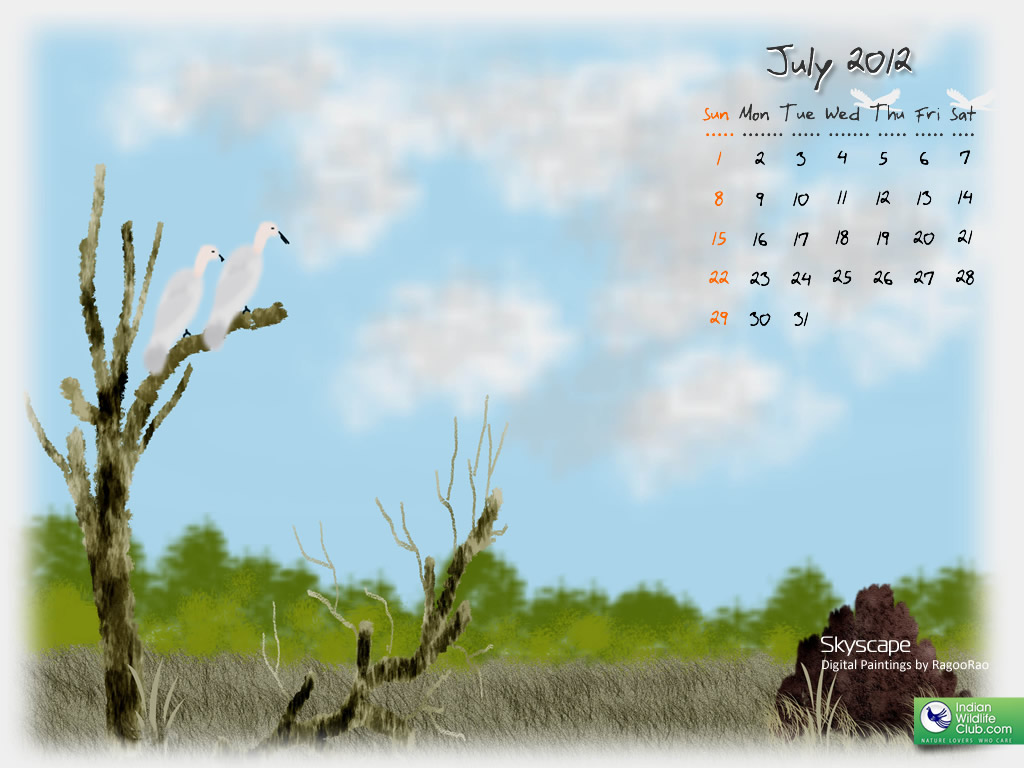
|
Environment Education
Online Environmental Courses
Our Club is proud that 17 of our members are enrolled in the one year certificate program offered by BNHS.
14 members signed up for The Leadership Course in Biodiversity Conservation (LCBC) while 3 signed up for the Basic Course in Entomolgy(BCE).
All seventeen of them, leaders in their own right, are now poised to take on larger roles to protect the environment around them. Team IWC and the Community of 5682 members wish them the very best for the future. Please feel free to share your unique experiences
in learning at the premier Natural History Organization in the country with IWC members by using our member upload features.
Here are brief details about the participants.
LCBC
1.Pooja Hemdev ( poojahemdev@gmail.com )
Pooja has voluntered for some field activities with the WWF-India and also writes articles for their quarterly publication.
2. Rohit Pansare (rpansare87@gmail.com)
Rohit is the founding member of an environmental organisation-Mission Enviro, which works for environmental education and awareness creation in high schools and colleges. His paper on celebrating festivals in a eco-friendly manner & a article on mining has
been published by the Institute of Science and Religion. He has also been a part of the 'Clean CEPT Initiative', CEPT, Ahmedabad, which was working towards cleaner campus while he pursued his Master's in Environmental Planning.
While pursuing Civil Engineering he represented India at the Bayer Young Environmental Envoy Programme, 2008 (BYEEP 2008) in collaboration with United Nations Environment Programme(UNEP), held at Leverkusen, Germany.
3. Sridhar A (mizhaavu@gmail.com)
Seidhar is part of the River Protection Forum in his home town Chalakudy, a people's forum concerned about the river conservation and working against the detiorating health of the river. He is also part of the various environmental organizations in Bangalore
like Hasiru Usiru, Bangalore Birds and Arkavathy River Protection Forum and takes part in their various activities.
4. Shailaja Deshpande shailajadesh@gmail.com
Shailaja has worked on restoration project of Ecological Society Pune. Currently working volantarily on a stream restoration project at Pune.
5. Ritu Sharma (ritu.sh1@gmail.com)
Ritu works as Assistant Manager with Mindteck (India) Pvt Ltd
6. Mohammed Rafiq (naturesmate@gmail.com)
Mohammed has been part of the effort on afforestation and particpated in tree planting and e-waste recycling.
7. Sujit Mazumder (sm22078@gmail.com)
Sujit is an animator by profession. His short film on saving nature can viewed at
http://www.indianwildlifeclub.com/wildbytes/index.aspx?vid=KHj8rwKf_uY
8. Abhilasha Mathur (abhilashamathur@gmail.com)
Abhilasha is a senior Marketing Manager.at a Bank.
9. Snehansu Bhusan Chatterjee (snehansu_chatterjee@doglover.com)
Snehansu is a Marketing Manager (Technical)
10. MAYUKH GHOSE (mayukhghose@gmail.com)
Mayukh is a Social Work Project Co-ordinator, voluntarily working with an NGO named JALPAIGURI AROHAN. The NGO is mainly focused on nature and wild life conservation.
11. Vidya Balasubramanyam (vidyafaps@yahoo.co.in)
Vidya is a student.
12. Dr. u.v.singh (uvsingh@yahoo.com)
Dr.Singh is from the INDIAN FOREST SERVICE, APCCF
13. N Mariappan (harudev2007@gmail.com)
Mariappan is an Assistant Professor in Forestry. He has published a book about "common Birds of Coimbatore" for school children. He has also started a nature club in his college.
14. Anita Dake (dhruvkanan@gmail.com)
Anita is a practising Archtect, who has developed interest to work on ecofriendly landscape designs and has been doing that. At present she is also trying to restore the degraded land on a hill next to her residence. She is also active in organic farming.
BCE
1. Avi Sabavala (jodhpur58@yahoo.com)
Avi is a Management consultant who can identify local butterflies
2. Rajendra Digambar Karnik (karnikrajendra@yahoo.co.in)
Rajendra is a Retired Govt. servant
3, Chitra Ravi (chitrabt12@gmail.com)
Chitra is a Senior Research Fellow, ATREE, Bangalore
|
General
Wilderness Conservation Exchange(WCE)- A vision for IWC
-Susan Sharma
With only 2.5% of the land area, India accounts for 7.8% of the recorded species of the world. This resource has to meet the demand of a population of 950 million (16 % of world) people and around 450 million (19 % of world) cattle. Forest ecosystems in India
are in a state of degradation mainly due to over-grazing, unregulated mining, fragmentation, invasion by non-native species, pollution, man animal conflict etc.
What can an online Club do to help Conservation of forests and wildlife?
The unique strength of IndianWildlifeClub.com is a -12 year in the making Community of Practice of nature lovers. IWC has strong community ties and cultural sensitivity. Can we extend our network to local field workers for our educational and outreach activities?
The survey on Wilderness Conservation Program which is now online at
http://www.surveymonkey.com/s/B5MLG6W
is an attempt to find solutions to the questions raised above.
376 potential volunteers have so far showed willingness to pledge their time upto one year with NGOs/Government agencies involved in conservation work on a volunteering basis. Concerns expressed by many potential volunteers we surveyed included lack of transparency
in recruiting and deployment of volunteers and lack of follow up action on work done by volunteers. The Implementing agencies (45 responses) were also keen to formalise volunteering in a professional way. Bringing complete transparency in recruiting, deployment
and documentation is a need felt by one and all.
We are in the process of finalising a project called "Wilderness Conservation Exchange"(WCE). Using applied technology, WCE can create and operate a live exchange which will monitor and document the work done by the volunteers in preselelected projects of
NGOs/Government departments. WCE will also take care of deployment of funds by funding agencies who come forward to support the project. IWC members will be encouraged to visit project sites to motivate and report on the work done. Besides keeping the
volunteers enthused this will add valuable content to our portal in the form of current reporting from remote areas.
Training programs will be organized to build local capacity by training local people to take ownership of the conservation of their habitat.
WCE intervention will be at the levels of
Knowledge Inclusion: Act as Knowledge connector across experts, society & local change agents through opinion sharing, communication & advocacy using a common platform.
Increased Pie of Social Investment:. To Overcome the free rider problem of society (“sole responsibility forf conservation lies with Govt”), change in mind set from “National property” to “Social property” is required.
For this, besides capital investment, social investment has to be there by investing in people.
Recognition of Neglected/Unidentified/Unprotected Biodiversity: An international study says biological diverse countries tend to spend less on protected areas than the less diverse countries & it’s true of India. The situation
can be improved only through effective community engagement and awareness through bottom-up & top- down strategies.
Our solution is based on the premise that protecting forests can be done by investing in people. The problems facing conservation stand to gain tremendously from the active involvement of volunteers. India has always had good environment laws and wildlife
laws but the implementation on the ground has been lacking. Government departments and most NGOs are widely known to be acutely short of trained ground level staff. Paid volunteerism in India is not well documented or followed up. Our solution preselects
implementing agencies working on conservation issues. WCE connects volunteers with institutions working in the wilderness conservation area and provide them with a steady stream of trained volunteers.
Our investment is in people who are the real change makers of society. A major focus of our WCE program is to create citizen reporters out of the volunteers so that their work is broadcast, gains from peer evaluation and
is archived for future follow-up action. As transparent pan –India platform for recruiting, training and placing volunteers is preselected projects; WCE is open to continuous assessment online for impact studies.
The environmental impact of our solution will be felt in conserving wildlife and the forests which is home to all living beings. The first level of assessment for impact will be measured at the level of the implementing agencies. A simultaneous assessment
can be carried out at the WCE level based on reporting by volunteers.
WCE volunteers will be trained in environment laws; forest rights act and community reserves. WCE helps empower and educate people who live in close proximity to wilderness and wildlife and gives them a stake in conservation by documenting their problems,
available local skill sets, skill-gaps, thus paving the way for creating opportunities for improved livelihood solutions and economic tie-ups.
WCE project is a logical extension of our community of practice, which will extend our club to ground level projects in a big way. IWC has over 5600 members, more than 40% of whom are from small towns and rural areas close to protected areas. Our volunteers
will act as citizen reporters documenting their efforts on the portal of IWC. This will give visibility to a wide section of population which is now untouched by mainstream media. This visibility can lead to economically beneficial tie-ups for the local
community the volunteers are serving. The economic impact for the conserved area can be supplemented by the possibility of claiming carbon credits for the area conserved.
We are hoping to raise funds from equity investors for the WCE exchange. Any suggestions from members are welcome.
|
Members Speak
From theyahoo group on Butterflyindia
Butterfly
application for IPad/IPhone
Posted by: "Sanjay sondhi"
sanjay.sondhi1@gmail.com
sondhi
MonApr 30, 2012 9:59 am (PDT)
Folks,
I had given some of my butterfly images to a colleague in Pune many
years ago. These folks have developed a butterfly application for IPad/
IPhone! I do not have either, so don't know what it looks like but the
link for this app is mentioned below for anyone who might want to
check it out.
http://itunes.apple.com/au/app/butterfly-eguide/id505085513?mt=8
Cheers
Sanjay Sondhi
Founder Trustee, TITLI TRUST
Member, Kalpavriksh
+91 135 2607452
Dehradun
www.titlitrust.com
www.kalpavriksh.org

|
Photography
Online photo exhibition
-Susan Sharma
In this digital age where “everyone is a photographer”, we decided that the time is ripe for starting online photo exhibitions. The
3D wall photoexhibition by members, is a new feature we have added.
http://www.wildscapes.net/photoExhibition.aspx
What makes a good photograph? Great photos are easy to spot. We know them when we see them, but hard to pin down and define what exactly makes them great. For me a great photo has all the elements of a good photo and has the abilty to connect with the viewer
instantly. Composition, good light, aesthetics, expression, capturing a moment, etc have become so much easier to manage, thanks to the era of digital cameras with loads of simple to use feaures. But is the photograph telling a story?
See for yourself by looking at Rahul Lamba's exhibition.
Rahul Lamba is a nature lover. "Having used all 3 generations of cameras (Fully Manual, Analog & now Digital) Wildlife Photography was only a natural progression. Love being in the outbacks and shooting anything that
is wild, with a focus on lesser fauna of India (Odonata, Butterflies and other insects)." For more of his photographs, visit
http://www.flickr.com/photos/64786738@N05/
For high resolution images contact Rahul at
Rahulsingh Lamba(rahulsingh.lamba@yahoo.in)
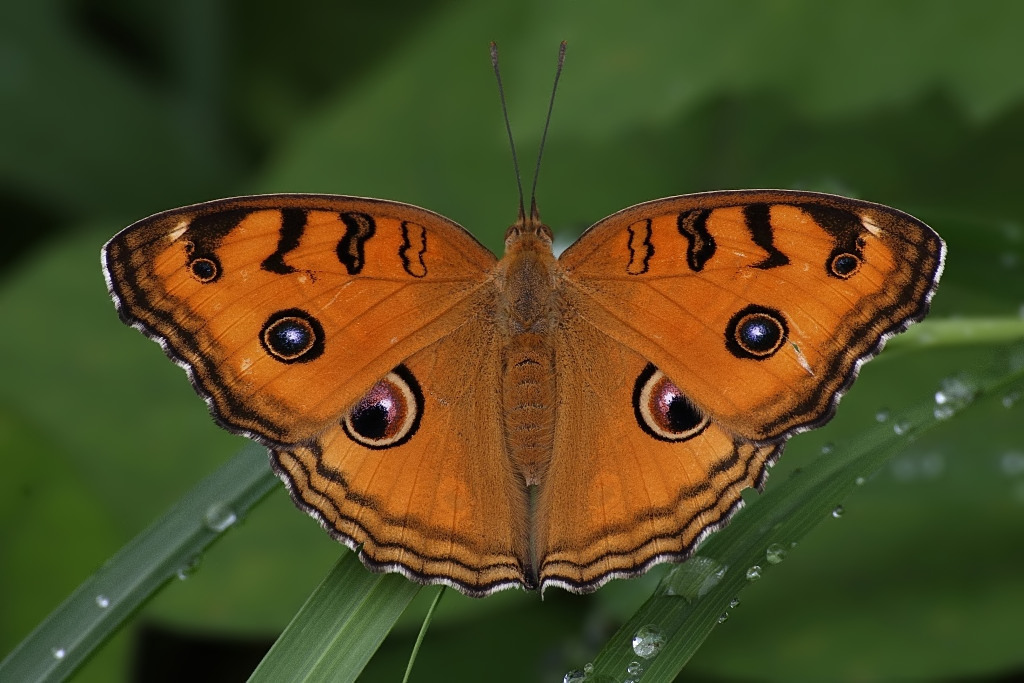
|
Wildlife Photolog
My Treasured Tiger Photos
by Ritesh Kumar Arun

The Alpha female of Bhadra Tiger Reserve. Shot in the month of March 2012
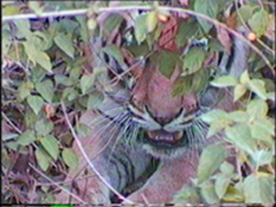
Bandipur Tiger Reserve 2012
This guy is called Raja from the wildlife guards and naturalists of Bandipur Tiger Reserve. He is dominating the forest from past 3 years. He is the father of 12 cubs and the most interesting part here is that. This huge
male had earlier killed the legendary "Agastya" the dominant male who ruled Bandipur for almost 4 or 6 years.

Bandipur Tiger Reserve 2012
She is the current queen and the darling among the wildlife photographers. Famoulsy known as "Gauri". As above Raja and Gauri are the mating pair who have successfully raised 8 cubs till now. There was an incident where
4 of her newly born cubs were killed and the reasons are not clearly known. Some say it may be by Dholes, Some say they were abandoned and some say it was due to other male who wanted court with this girl. However of all the odds Gauri has again a proud mother
3 cubs.
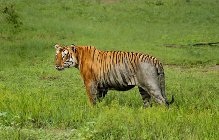
Bandipur Tiger Reserve 2011
This picture was taken during the onset of Monsoon and this is the same picture of the now king of the Forest. "Raja". This was when he was pretty new to Bandipur Forest and he was wandering endlessly and was the most
spotted Tiger. Since he did not have a teritory of his own he was everywhere. Some times he was even spotted sitting next to the main roads which connect Karnataka with Tamilnadu.
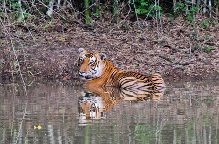
Bandipur Tiger Reserve 2012
This picture is again of the same Alpha male after winning his own piece of land. This guy is a reall show stopper. I mean to say he just wont hesitate to move between vehicles. He will go in the direction which he wants
to go and he wont care if there are 2 or 3 vehicles carrying people who are just praying for a glimps of this guy. If he is out then its sure that you will be blessed for atleast 2 hrs of his time with everybody with all sorts of poses.
(Ritesh Kumar can be contacted at aurora.ritesh@hotmail.com)
|